Sanjay Gupta's Blog, page 2
May 12, 2023
How about SLMs - Small Language Models?
 Image by BNP Design Studio
Image by BNP Design Studio
I know large language models, LLMs as they are called in AI circles, are all the rage these days. But lately, I’ve been thinking of SLMs — small language models.
Not that I’m the first one to think small in this way. For example, when people are angry with each other, they prefer to speak in SLMs.
Exhibit A: The husband has a mere twitch of the lips when the wifey stops him right there. “Shut up! Don’t say a word!” [I wanted to flip the gender stereotype here and wanted the hubby to be saying the shut-up command, but something told me it wouldn’t fly, so I shut that thought out.]
SLMs are especially popular with other (often better) animals than humans. A coo-oo, clack-clack or screech often does the job better than voluminous human speech.
And then, sometimes, the smallness of some models becomes so infinitesimally small that no words — and hence no language, not to speak of models — are required at all.
A sharp look in someone’s direction, a press of the hand on a shoulder that needs pressing in a certain way, or a shared moment in silence is all that is needed.
Sometimes I wonder what’s going to happen with so many towers of LLM babble being created and business models being built on top (models atop models, huh?) We might even be drowning in a frothy alphabet soup without digesting a single letter.
And just as I was going on further with this post, a voice hit out at me from somewhere: “Time to shut up now!” (Thankfully, it’s my own goddamn brain and not a Neuralink implant freaking out.)
I looked at my analog watch and felt happy to see the second hand moving, regardless of what’s going on in the world.
March 20, 2023
So, Have You Decided to be Happy Today?

Today is the day you can be technically happy, regardless of where you live in the world. Yes, it’s the International Day of Happiness.
We just got off celebrating International Women’s Day. And before we could relax, there’s this Happiness day!
It seems the modern world can’t do something unless there’s a day assigned to it: You, here, take this day, do this or that!
Shall we return to the same old sadness that has pervaded our lives all through the year—minus the one day we are talking about?
IMHO, we should celebrate these days on ALL days: Women’s Day, Men’s Day, Choose-Who-You-Want-to-be-Day, Earth Day, Father’s Day, Mother’s Day, Parents’ Day, Children’s Day, Environment Day, Health Day, Joy Day, Forgiveness Day, Friendship Day, No-Enemies-Day, No-War-Day! And oh, by the way, No-Day-Day!!
Plus, of course, any other day that makes you really, really happy 🙂
Tell ya what: forget the date. Celebrate the day. Today. Then every single day.
February 1, 2023
How CXOs Can Navigate the Heady Mix of AI, Crypto, Cloud...
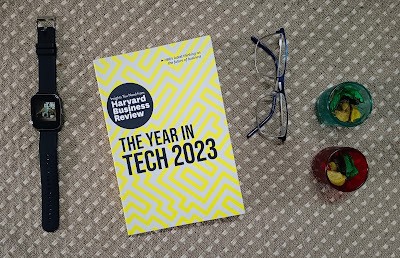 Photo Imaging by Sanjay Gupta
Photo Imaging by Sanjay Gupta
If the recent hype around ChatGPT is anything to go by, the world seems to be reaching an inflection point in artificial intelligence (AI) and associated tools. (GPT stands for Generative Pre-trained Transformer, a large language model for generating text using deep learning.)
But AI is just one of several pathbreaking tech tools that CX and IT decision makers have at their disposal today to take their businesses to even higher levels of efficiency and agility. What will the future hold for contactless commerce and how is the customer experience being shaped and reshaped in retail? Should they experiment with the metaverse and non-fungible tokens (NFTs) and if so, how? What caveats lie ahead in a world pummeled by privacy challenges and user-trust issues?
Thankfully, insights from Harvard Business Review are at hand for CXOs to navigate the present with an eye on the future—in the form of a slim yet powerful guide of a book titled The Year in Tech 2023.
The book is neatly arranged into four sections with a view to providing some holistic crystal-gazing across a chosen set of emerging and mature technologies. The sections are named perceptively: The New Fundamentals (covering the metaverse, NFTs, stablecoins, contactless commerce, and the talent question); Fresh Takes on Mature Tech (the cloud, cookies, and ransomware); AI for the Rest of Us (data quality, no-code platforms, warehouse automation); and Trust Me (digital design choices and variation of digital trust around the world).
One of the best things about HBR’s content is its clarity and simplicity, and the same is reflected in this book—something that should be appreciated by the ever-pressed-for-time decision makers. And if they want to go in-depth into any topic that particularly interests them, there’s a ton of information on the web already.
Another highlight of the book is that it often seeks to present scenarios with an ethical lens. Socially responsible and forward-thinking enterprises will be able to benefit from such treatment.
Let me now give you a sampling of the insights gleaned from it.
One of my favorite passages is how the nature and function of the retail store will change dramatically in a contactless world [not fully contactless, I believe, but a mix determined by caution and convenience]. “It will become a space festooned with interactive displays and kiosks, virtual reality zones, and an array of robotic helpers, with fulfillment done from off-site warehouses or direct to the customer.”
A key factor in capitalizing on the opportunities and mitigating the risks, according to the book, will be the extent to which retailers can create “immersive, content-rich experiences that are highly personalized” for individual consumers.
Creating such personalized customer experiences will, of course, rely on the growing capabilities of AI tools. And while we are nowhere near generating $13 trillion of value each year (by 2030) predicted by the McKinsey Global Institute, the renewed interest in AI ever since ChatGPT broke onto the scene will only accelerate the competition among providers and the adoption among users.
Businesses of all sizes will play a role in such an accelerated adoption—and not just the Googles, Amazons, Facebooks, and Microsofts of the world who wield enormous compute and data power in their sprawling server farms.
The question is, How?
An interesting answer is given by Andrew Ng (of Baidu, Coursera, and Google Brain fame) in the chapter AI Doesn’t Have to be Too Expensive or Complicated. He posits that for far too long, much of the AI research was driven by software-centric development (also called model-centric development). In this model, the data is fixed and teams aim to optimize or invent new programs to learn well from the available data. Companies, especially tech giants, with large data sets used it to drive innovation. At AI’s current sophistication levels, however, argues Andrew, the bottleneck for many applications is getting the right data to feed to the software. In this context, it may be more fruitful to make sure companies have “good data” and not just “big data.”
This shift in approach implies that the data should be reasonably comprehensive in its coverage of important cases and labeled consistently. “Data is food for AI, and modern AI systems need not only calories, but also high-quality nutrition,” he writes. He calls the new model “data-centric AI development.”
To extend the benefit of AI to small and midsize businesses, no-code platforms that have been gaining traction of late will become increasingly important, the book notes in another chapter in the same section: “Where a team of engineers was once required to build a piece of software, now users with a web browser and an idea have the power to bring that idea to life themselves.” Most importantly, low-code platforms are making it possible to deploy AI without hiring “an army of expensive developers and data scientists.” (So ‘data scientist’ may not continue to be the sexiest job of the century after all!)
Among the mature technologies, the cloud will become even more compelling to business leaders in terms of embracing it for more workloads and use cases. The book cites how the cloud enabled the rapid development of the Covid-19 vaccine for Moderna, a relatively small firm compared to the pharma giants. Thanks to the flexibility and power of the cloud, Moderna was able to build and scale its operations on the cloud, and was able to “deliver its first clinical batch to the National Institutes of Health for phase one trial only 42 days after initial sequencing” of the virus.
Let’s switch back to an emerging star that continues to bewilder and bemuse CXOs across industries: the metaverse. For one, the book offers a relatively clearer definition of the metaverse: any digital experience on the internet that is persistent, immersive, three-dimensional, and virtual. Metaverse experiences enable people to play, work, connect, or buy (while the experiences are virtual, the things bought can be virtual or real).
Beyond the obvious use cases of gaming, virtual showrooms, and fashion shows, the book urges leaders to “look for applications” in less explored areas. “Almost every chief marketing officer already has made, or will soon make, a public commitment to sustainability-related environmental, social, and governance goals, and they will soon be measurable. What can you pilot in the metaverse that allows you to test more sustainable approaches to serving your customers?”
Such questioning by various stakeholders can open up the floodgates to innovative use cases of the metaverse and NFTs. The latter, driven by blockchain technology, have enabled a whole new range of ownership and trading activities in the digital realm.
Last but not the least, the book’s section on building and promoting digital trust, Trust Me, not only looks at interesting data on consumer attitudes and behaviors on digital trust around the globe, it stresses on the need for brands to make their design choices more carefully.
“When making design choices on a platform, managers should step back from short-term and narrow metrics like conversions and think through the broader questions about the value they create for their stakeholders,” it says. To get going, there are five questions brands must consider:
Are you transparent about prices and fees?Do you make it easy to cancel your service?Do you use default settings in a way that is genuinely helpful for customers?Do you frame choices in a misleading way?Do you create content that is addictive? [especially social media and video]Most of the big tech platforms are routinely scrutinized and censured these days by regulators around the world for engaging in practices for short-term commercial gains that are harmful to consumers in the long term. We constantly hear of lawsuits, fines, and penalties.
However, businesses and brands that care for the long-term value they give to customers don’t have to wait for regulation to catch up—and make a fresh start themselves by following the best practices in developing digital trust and wellbeing. They can answer the above five questions honestly and take more proactive steps to protect consumers as well as their own reputation, and build lasting value for multiple stakeholders.
Thank you for reading and wish you all the best in treading the tech path in 2023 and beyond with caution, care, and accomplishment!
(Note: This post was first published on www.freshworks.com under a different headline and cover image.)August 9, 2022
Taking Delight in What Makes Us Human
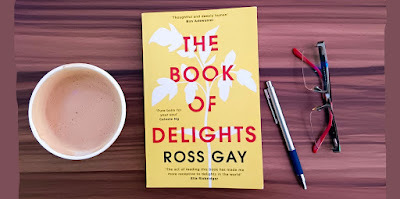
Unlike Ross Gay, who wrote The Book of Delights, his book of essayettes, in long hand, I typed this review of the book into the Microsoft Surface given to me delightfully by Freshworks when I joined the ‘love-your-software kudumba’ three years back. (Kudumba means family and it is Freshworks’ mission to make software people love to use.)
And while I agree with Ross on writing by hand being “a surprising and utter delight” I have taken as much delight, if not more, in sifting through his daily musings of whatever caught his fancy—and punching in these words on the laptop.
First, a little explanation of why this review and then I’ll share some delightful nuggets from the book, peppered (or sweetened, if sweet is your thing) with my own comments.
Ever since Freshworks chose ‘Delight made easy’ as our tagline, no mention of the word ‘delight’ escapes my attention. Plus, given that we have a thriving Freshworks Book Circle community of readers in our midst, I just grabbed Ross’s book from a bookstore on a recent visit as soon as the title caught my eye.
A few years back, on his forty-second birthday, Ross Gay, a professor of English at Indiana University and an award-winning poet-author, began the endeavor of writing one short essay each day about “something delightful.” By his own admission, he cheated some days and let them pass happily without writing. To use his terminology, he took delight in “blowing it off.”
But when he does get down to writing his thoughts and observations on any topic under the sun—varying from praying mantis and high-five from strangers to coffee without the saucer and airplane rituals—the result is a delight contagion spreading through whoever reads them. After an eyeful of reading, you are bound to change how you pay attention to the goings on in life around you. His delightful observations make you thoughtful and cheerful in equal measure.
The Book of Delights excels in noticing the joyous minutiae of existence and the connections that human beings make within their species as well as their surrounding abundance of thriving, pulsating life.
In his very first essayette (My Birthday, Kinda), Ross observed, among other things, a fly land on the handle of a cup of coffee. And it took him no time to tease the delight out of the spectacle. This is how he puts it: “A fly, its wings hauling all the light in the room, landing on the porcelain handle as if to say: ‘Notice the precise flare of this handle, as though designed for the romance between the thumb and index finger that holding a cup can be.” Coffee or tea lovers clutching their cuppas would approve.
In another piece (Hummingbird), he writes: “Once I saw a hummingbird perusing the red impatiens outside my building at school, and I walked slowly over to the planting, plucked one, and held it in my outstretched hand perfectly still, long enough that at least one student walking my way crossed the street so as not to get too close to me, until the blur of light did in fact dip its face into the meager sweet in my hand.”
How lucky and delightful the experience of feeding “the blur of light” (lovely expression!) out of one’s hand, I thought as I read the above passage (I must confess that my own experience of once trying to feed a squirrel out of my hand went awry, though the memory is still delightful and dear to me: the squirrel bit my hand before making off with the morsel).
One of the key motifs in Ross’s book is that he always seems to be looking out for a nod, an acknowledgment, even a physical touch symbolizing kindness or appreciation in fellow human beings. Let me pull out two episodes that I particularly found noteworthy.
Once Ross was working on his computer in a coffee shop with his headphones on and swaying to a new De La Soul record when he found a teenage girl standing next to him, hand raised. And just as he looked up, confused, and pulled back his headphones, the girl said (presumptively): “Working on your paper?! Good job to you! High five!”
Ross high-fived with delight.
Then, in the essayette titled Tap Tap, he writes: “I take it as no small gesture of solidarity and, more to the point, love, or, even more to the point, tenderness, when the brother working as a flight attendant…walking backward in front of the cart, after putting my seltzer on my tray table, said, ‘There you go, man,’ and tapped my arm twice, tap, tap.”
Another observation I could immediately relate to, having seen it at multiple train and bus stations across India, came in the piece titled Sharing a Bag. In Ross’s words: “I adore it when I see two people…sharing the burden of a shopping bag or sack of laundry by each gripping one of the handles.”
The way Ross further describes how the two people usually lug the bag makes you break into a spontaneous chuckle, followed by a nod of human understanding: “It at first seems to encourage a kind of staggering, as the uninitiated, or the impatient, will try to walk at his own pace, the bag twisting this way and that, whacking shins or skidding along the ground. But as we mostly do, feeling the sack, which has become a kind of tether between us, we modulate our pace, even our sway and saunter—the good and sole rhythms we might swear we live by—to the one on the other side of the sack.”
As an aside, aren’t we all in the corporate world trying to modulate our pace, collaborating to carry and deliver the bag of goods (or goodies)?
The Book of Delights is a treasure trove of joyous observations, especially about the daily human experience and our shared bonds.
But before I bid you adieu, here’s one more tidbit which, I’m delighted to say, has a direct correlation with customer experience (though I believe one can find CX inspiration in a lot of Ross’s observations.)
Now, Ross doesn’t like to have a saucer with his coffee—the cup alone will do, thank you very much. So, in Coffee without the Saucer, he talks about how he once had to “rescue” his short Americano that was “wobbling precariously on the little saucer” by placing it squarely on the table. “Phew. And the spoon clanging the whole time. For Pete’s sake.” (You can almost feel the disgruntlement on his face.)
And then he recalls a delightful experience of “a saucerless administration of a small coffee drink” at an espresso place. He loves the place not only for the “very fine small coffee drinks they make” but also for the curiosity of one barista in particular, who “studies my face as I indulge.”
“No saucer, right, she observed after one visit. I love her.”
Delight is made easy when you deliver what people love: whether coffee or software.
(This post was written for and first appeared on Freshworks.com.)
July 20, 2022
For the Love of Walking
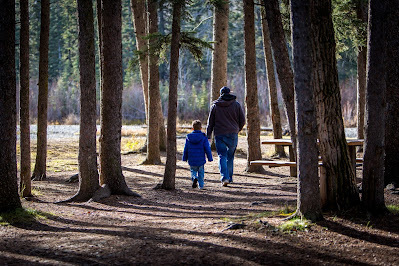
Aldous Huxley’s father considered a walk among the mountains as the equivalent of churchgoing. Walt Whitman spoke of his longing to “walk undisturbed” in a garden of beautiful flowers in one of his poems. And Dolly Parton had once said, “I walk tall; I got a tall attitude.”
Me? I walk because I just love walking.
There is so much joy, so much learning, so much fun in the simple, simple act of walking that I thought it worth my while to write this ode.
Whether I am walking among the mountains, on the road less traveled, or even in a concrete jungle, there’s something about walking that lifts not just my step but my spirit as well.
Nature trails are the best for walking, yes. Didn’t the great naturalist John Muir once remark, “In every walk with nature, one receives far more than he seeks”?
Fortunately for me, I’m blessed to receive a lot not only in the midst of nature but also wherever I happen to be walking.
Here I’m sharing a few of my experiences and thoughts on walking in different places and situations.
Let me begin with nature.
Nature, in my view, works its magic best while you are ambling about, quietly admiring its sights, sounds, and smells.
Years ago, I was going back to our camping base with a bunch of teachers and students. We were staying in a forest in the Himalayas for 10 days as part of a study-cum-adventure camp. It was the best time of the day: morning. The trail we were walking on was flanked by mighty, benevolent trees. The rays of the sun were just beginning to penetrate the leaves and kiss our footsteps. Birds were singing as if for the first time. We were hardly speaking but a lot was conveyed in that long, blissful walk.
Nature, in my view, works its magic best while you are ambling about, quietly admiring its sights, sounds, and smells. Before you know, you hear the birdsong’s echo in your heart. A smile appears on your lips out of nowhere. Happiness rules. And gratitude. And love.
I was once on a work trip and staying in a hotel in a city I hardly knew. As is my wont, I slipped out of the hotel at the first opportunity in order to explore the area around it in the best way I could think of: on foot. It was evening and getting dark and people were hurrying home in the daily orchestra of routines familiar to cities all around the world. Honk-honk, screech-screech, rush-rush. Pedestrians crossing the roads with quick steps, before the traffic light turns green again. The wheelbarrow fruit vendors agreeing to sell their perishables at lower and lower prices to hard-nosed shoppers in the hope of clearing out their stock for the day. Mosquitoes swarming in the dusk, ready to attack some more than others for reasons best known to them.
For a moment I paused and stood still at a crossroads, watching the drama of urban life all around me. The sun just disappeared with double-quick speed behind a building but its reflection was still visible on another glass giant across the road. The warmth and the light of the yellow star, which looked like an orange ball before bouncing off for the day, would remain for another half hour or so.
In that exploratory walk (I was being a ‘flaneur’ I found out later), I got to know more about that particular area of the city than if I had been running or driving past in a car (though running and driving have their own charms).
When you put your whole and soul into the act of walking, you are rewarded with an indescribable feeling of joy and achievement.
Of late, I have begun to observe how I walk and what happens in the body when we walk. Especially when I go for morning walks. I’ve noticed, for example, that when I keep walking even when I’m feeling a bit tired or “not up to it”, my senses perk up gradually. After about three or four thousand steps, the blood circulation improves and sends my attitude scurrying toward positivity again. What earlier seemed like a burden becomes easy and light as a feather.
Another observation: when you put your whole and soul into the act of walking, you are rewarded with an indescribable feeling of joy and achievement (something similar happens in running and other sporting activities, I’m sure). If the mind gets pulled into worrisome thoughts about what the day ahead holds, I chide it gently and bring my awareness and focus back to where I’m going; how I’m lifting and putting forth each foot; whether the body in motion is carrying the mind along; whether the breathing is deep and rhythmic enough to be as effortless as possible, giving me more ‘bang for the breath’, so to say.
I visualize my own reflection in an imaginary, life-size mirror placed ahead of me. When all the elements of walking—the limbs, the thoughts, the breathing—are well-aligned, when the act of walking becomes an integral part of my present being, the reflected image naturally assumes an effortless, innate grace.
You can indeed realize your true self through the simple, serene act of walking.
I tend to think of such graceful, wholesome walking instances akin to the ‘walking meditation’ that the Buddha is often said to have practiced.
I walk some more.
Walking gives us not only the space we so constantly seek but also offers multiple opportunities, in a variety of paces, to slow down for, pause and observe, and touch and experience the beautiful things that otherwise get missed in the hustle of modern, gadget-obsessed life.
At least for me, walking is a way of connecting with our pristine, humane nature. Allowing us to exercise not just the muscles, but our common, inner faculty of joy and wonder too.
Let me end this note with these lovely, thought-provoking words by American singer-songwriter Roger Miller: “Some people walk in the rain, others just get wet.”
Thank you for walking with me.
May 16, 2022
"I stopped long ago. When will you stop?"
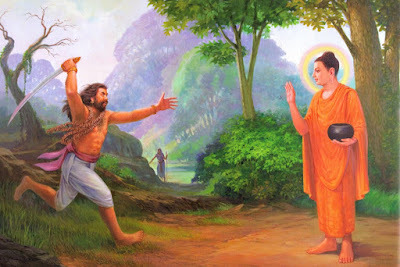 I'm reminded of these words of Buddha today, on the occasion of Buddha Purnima that commemorates Shakyamuni's birth over two millennia ago.
I'm reminded of these words of Buddha today, on the occasion of Buddha Purnima that commemorates Shakyamuni's birth over two millennia ago.Let me recount the deeply moving story behind these words. Hundreds of millions in India and elsewhere would already know this either through moral tales taught in school or some other books tracing the life of the Enlightened One. Nevertheless, the message of peace and non-violence in this story remains relevant as ever—indeed more so now than at any other point in human history.
Once the Buddha was passing through a jungle that was dreaded by the locals, who avoided it for fear of limb and life. It was said that the forest was the hideout and preying ground of a dangerous murderer called Angulimala. What he used to do was murder anyone passing through the wood and, horror of horrors, cut off one of the fingers from the person’s hand. He had a garland of such fingers that he used to wear around his neck—which is what had earned him the moniker Angulimala (in the Pali language, the word “anguli” means finger and “mala” means necklace).
Even though the Buddha was aware of this murderer and had possibly been warned against visiting those parts frequented by Angulimala, he chose to ignore the warning and anyway pass through the forest that particular evening.
It was getting dark and the silence of the jungle seemed ominous.
With his senses keen as ever, the Buddha soon perceived someone following behind him. The footsteps gradually grew louder. The Buddha heard a threatening voice: “Stop, monk, stop!”
But the Buddha remained unperturbed and kept walking slowly, quietly.
In no time, Angulimala appeared before the Buddha, brandishing his sword and speaking menacingly: “I told you to stop. Why didn’t you stop?”
The Buddha looked at Angulimala with his peaceful, penetrating gaze and said, “I stopped long ago, Angulimala. When will you stop?”
The calm demeanor with which Buddha addressed him and the serene look of the sage completely disarmed Angulimala. His outer image of a treacherous murderer was shattered. He was suddenly gripped with repentance and was overwhelmed by the Buddha’s loving presence.
Angulimala fell at the Buddha’s feet and cried.
The Buddha smiled kindly at the murderer. He picked up Angulimala and embraced him as he would embrace any of his disciples in his sangha (brotherhood of monks).
Gently and with tender care, the Buddha spoke to Angulimala about how he had long ago stopped committing acts that caused suffering to other living beings and why everyone should nurture compassion in their heart.
In the book Old Path White Clouds, the late vietnamese monk Thich Nhat Hanh has beautifully captured how the Buddha saw through the suffering of Angulimala before he became a murderer and the gentleness with which he spoke to the repentant man. In Nhat Hanh’s words, the Buddha told Angulimala:
“Angulimala, I know you have suffered deeply at the hands of other humans. Sometimes humans can be most cruel. Such cruelty is the result of ignorance, hatred, desire, and jealousy. But humans can also be understanding and compassionate. Have you ever met a bhikkhu before? Bhikkhus vow to protect the lives of all other beings. They vow to overcome desire, hatred, and ignorance. There are many people, not just bhikkhus, whose lives are based on understanding and love. Angulimala, there may be cruel people in this world, but there are also many kind people. Do not be blinded. My path can transform cruelty into kindness. Hatred is the path you are on now. You should stop. Choose the path of forgiveness, understanding, and love instead.” (Bhikkhu means begging monk.)
How simple, profound, and true are Buddha’s words! And, I must add, how relevant in these times when ignorance, hatred, and desire rule the minds and motivations of the power hungry—the Putins of today’s world.
Moved by Buddha’s message of kindness and peace, Angulimala gave up his nefarious ways and went on to become one of his most ardent disciples.
The bhikkhus who saw Angulimala’s transformation from a mass murderer to a monk of rare caliber were so impressed that they named him Ahimsaka (the Nonviolent One, how ironic but apt).
There is an Angulimala in each one of us. Let’s try and bring him round to listen to the voice of love and peace.
Let’s stop now before it’s too late.
Happy Buddha Purnima!
April 19, 2022
The Girl Who Ran with Amazing Grace
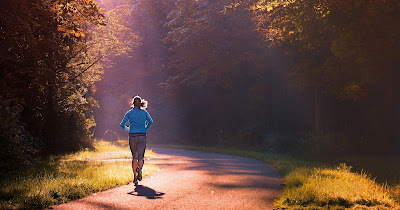
I saw her about three years back, a few months before the pandemic became a thing. It was on two occasions, spaced within a week, at my neighborhood park. After that, I never got to catch even a fleeting glimpse of her supple, graceful persona.
She is no Flo-Jo or PT Usha, but to me she remains one of the most inspiring ‘track-and-field’ athletes ever.
And come to think of it: I was reminded of her most recently while working on my third book, which is about meditation.
“What has achieving excellence in running got to do with attaining stillness in meditation,” you ask?
Contrary to that flawed first impression, a lot. Let me describe her and what makes the memory of her movement an abiding instance of inspiration, and you’ll probably know.
It happened when I was struggling with my own awkward attempt to run a few hundred feet after many, many years. While I had been keeping a healthy regimen of walking and meditation for quite some time, somehow I stayed away from running. And the reason I was attempting to run again was to further strengthen my knees that had become weaker ever since diabetes discovered me.
So, just as I was kind of giving up on the run (for the time being, I told myself), this girl in her late teens flows past me—prompting me to turn my head and take a second look.
Flow, mind you, not run, is the appropriate word here even though she was obviously running. And the same word—flow—comes up whenever my mind tries to retrieve the moving image of her smooth nimbleness from the Hippocampus.
The human brain is such an astonishing piece of equipment and works in (often) pleasantly surprising ways, isn’t it? The very mention of “flow” brings up Mihaly Csikszentmihalyi’s book of the same name. Do you know how Mihaly has described flow?
“A state of concentration so focused that it amounts to complete absorption in an activity and results in the achievement of a perfect state of happiness.”
Serendipity, we love you.
I know I don’t need to write another word of explanation after this, but I will—just a few :)
When I took the second, and third, and fourth look at the girl running along the boundary of the park, I was stopped in my tracks by what I saw and felt.
She was running with such graceful movements, her hands and legs swaying in perfect rhythm, that Mihaly could’ve been looking at her when describing flow.
The girl was probably preparing for some running competition but her serene face was completely absorbed in the here-and-now moment. The expression on her face was beyond happiness.
I could barely run for one side of the boundary and here she was, doing five full rounds of the park with an ease and joy that instantly made her an icon of motivation for me.
If I may dare say, she was in some sort of divine flow.
Not much different from the flow you feel when absorbed in meditation.
I am grateful for having had the opportunity to feel inspired by her amazing grace. And happy that the inspiration is a continuing, ongoing phenomenon.
Cover Image: Pixabay
March 2, 2022
An Open Letter to Putin on Ukraine

Dear Putin,
The first thing you should know, given the horror of war you’ve needlessly unleashed on your neighbor, is that everyone across the globe must be appalled at how I address you. To much of the civilized, peace-loving world, you are anything but ‘Dear’.
So why do I choose to do that?
Simply because the seeds of war are sown with hate—and if the recent regime changes and global events are any indication, we are already surrounded in enough hate.
Now, the whole world knows the lies you have been telling Russians, most of whom don’t want anything to do with this war you have foisted on them. Just because you believed your own lies of ‘liberating Ukraine’ doesn’t mean the world, in this age of connectivity and social media, would trust what you say—nor would Russians continue to believe you after seeing the images of suffering that must have reached them in gigabytes.
Contrary to your designs, the key object of your derision and hate, Volodymyr Zelenskyy, has now emerged as the heroic, exemplary leader of a people under dictatorial invasion. And what an inspiration he has been! The entire world is saluting him with vicarious pride.
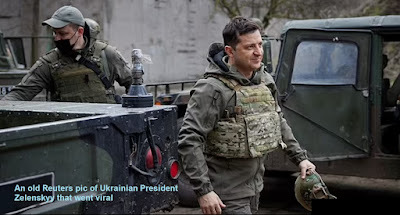
In case you don’t know already, all this hate and anger is causing great anguish and pain to your own people, the majority of Russians over whom you are said to rule as per your whims and fancies. The very small minority of your compatriots who concur with you would be, of course, in your elite little circle of influence. Did none of them warn you against the consequences of the lies and the power-hungry ambitions?
As the parents in Ukraine grieve over their dead sons and daughters, their counterparts in Russia are reported to be discovering, to their sheer dismay, that their own progeny—some still in their teens—are pulling the triggers at your behest. Russians are also discovering, and will continue to do so in the days and weeks ahead, the dire consequences of crushing economic sanctions being imposed on your country and those who collaborate with its entities.
I’m with the world in condemning your acts of aggression and war that seem set to affect billions in the long run.
But I’m also with the apostles of peace such as Buddha and Gandhi from this nation called India (that knows a thing or two about war, aggression, and holding one’s own with equanimity).
Which is why even though you have surrounded Ukraine with tanks and continue to pound the country’s people with death and suffering, I’m still addressing you as ‘Dear’ and hoping that there’s a modicum of love and understanding left somewhere in that accumulated pile of hate and ire in your heart.
Listen to that voice of love in your own being, Dear Putin, before it is too late. For you.
Namaste. (I bow to the divine in you.)
Om Shantih Shantih. (Let there be peace. Om.)
September 5, 2021
Of Squirrels and Quarrels
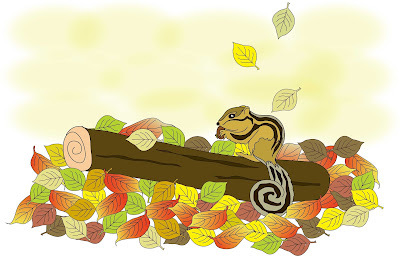
At first she completely ignored me, though it was she who made the first few advances in her bouncy gait. And when I extended my hand out a little bit, she scampered away as quickly as she had come. I waited a few more seconds before resuming to read a book I had just bought from the nearby market, hoping that she would come again and stay for a while. I found her kinda cute, with a tiny face, a soft body and quick, jerky movements with which she moved about. In our five-second encounter I had even given her a name: Flitty.
Now, as I took out a bit of roti (a round, thin Indian bread made of wheat dough) from the tiffin box in my bag, Flitty appeared again before me, looking more resolute and sure. Learning from my overzealousness in reaching out to her (How I wanted to shake her tiny hand!), this time I remained calm and unmoved. Emboldened, she took a few more quick hops ahead and stood still, barely two feet away from the park bench I was sitting on. Slowly, very slowly, I dropped the piece of roti at her side, without making the slightest sound. True to her name, Flitty made a series of quick twitching turns, as if to run away again. But no, from the trembling of her tiny mouth, I could feel that she was hungry and wouldn’t mind taking the risk of being so near a human for a sweet little morsel.
So Flitty stayed, snatched the piece of roti lying on the grass with her dexterous hands, and nibbled at it vigorously amid jealous screeches from three or four fellow squirrels who had scented food and were now gathered around us.
Soon enough, besides Flitty and friends, a flock of mynahs and about half-a-dozen crows were chirping and crowing around the trees that surrounded the bench.
I was tempted to throw some biscuits in their direction but held myself in check: it’s generally not advisable to give cooked or processed food to birds and animals as it can upset their health (besides spoiling their habits).
Instead, I sat back and watched the fun riot of squirrels and quarrels all around me.
There was a little mud pool into which some rainwater had collected. The crows, realizing that no food was coming their way, headed toward the pool. One fella hopped inside and splashed the muddy water around, followed by another black dude who seemed quite amused by the spectacle. Their numbers soon swelled into what would collectively make them into a murder of crows—though, obviously, it was frolic rather than murder on their minds. Not that there were no squabbles. Some people just want to grab opportunities out of turn, you know.
Not far from this frolicking was a string of robust-looking garden ants making their way to the roots of an Ashoka tree. I could see a hole at the bottom of the tree trunk into which they marched and disappeared. From the same hole, another string of ants quickly emerged, carrying bits of rice on top of their heads. This seemed like an efficient supply-chain operation in which the rice thrown by someone near the tree was being supplied to where it was truly needed through a chain of smooth operators.
Like all supply chains, though, there were hiccups. I saw a pug separated from its owner chase away the ants hurrying toward their destination with a snort of its nose and some scratching of its paws. The thought must have entered its head somehow that this rice-redistribution operation must not be allowed to go on. Or so I felt.
The dog owner soon came looking for his pet, caught hold of the leash, and gently dragged it away. Even as the pug went away, it turned its head and wistfully looked back to where it was having so much fun.
The ants barely broke a sweat and resumed their work on the double.
High up into the thicket of branches of a mango tree, a couple of parrots were fighting with each other—possibly about who had the right to the first bite of a particularly luscious mango. In their apparent struggle to peck first at the fruit, the ripened mango broke free and came to the ground with a soft thud. There it lay for a while, before it was picked up and carried off by a little girl, probably the daughter of one of the laborers working a few meters away with their tools on repaving the footpath.
The parrots came looking for it and, realizing that the object of their affection was claimed by someone they couldn’t fight, shrieked away into the distance.
I buried myself in the book once again, quietly laughing.
Image: Pixabay.com
August 17, 2021
What a quarter century of writing and editing has taught me

Image by Hannah Olinger for Unsplash
As with all writing, this one began with a blank space. Or rather, with the vast expanse of creative possibility represented by this seemingly “endless page”. (Thank you, Internet, for that.)
Now there are two ways I can do this, the sharing of my experience as a writer-editor for over 25 years. The more obvious and cliched one would be to pen down (key in, actually) the lessons I’ve learned and package them as a listicle: 10 Extraordinary lessons I learned in 25 years of career. Or some such.
This would please a lot of folks and probably fit the bill when it comes to getting the eyeballs and ticking some boxes in search engine optimization.
But hell, no. To be honest, I’ve done my unfair share of writing listicles. And yet, I thought that twenty-flickin’-five years is a pretty long time to be a little more indulgent. A bit reminiscing, perhaps. And a lot more forthcoming certainly.
So this one is a trip down the memory lane combined with fragments of learnings—woven, I hope, with the kind of warp and weft that will keep you interested. Shoot and scoot if you find me boring!
Here goes...
I got my first real job as a copy editor while I was awaiting the results of my postgraduate journalism course. My LinkedIn profile doesn’t mention that company, nor do I intend to name it here (we can take that offline, right?) But I did cut some of my teeth doing industrial-strength editing at this publishing firm. Those were the days of marking copy on paper and then handing it over to a computer operator for corrections. Girl, was I proud of my prowess with editing symbols! (The symbol for deletion was shaped like a ‘d’ with the upper edge slightly hooked; spacing out two wrongly joined letters of the alphabet was the job of a zigzag line plonked in their midst; a double-looped squiggle was used to interchange two letters or words; and so on.)
What gave me a great platform for learning and early boasting rights to a big media brand, however, was DQ. That is short for Dataquest, India’s first computer magazine and, at the height of its prime, the most significant purveyor of happenings in the IT industry in this part of the world. (In those days, the DQ Top 20 parties, where the top players of the industry were feted, were attended by the Who’s Who of Indian IT such as Shiv Nadar and Dewang Mehta.)
There was a small library in one of the three basement offices occupied by Cyber Media, the parent company of DQ, in New Delhi’s Panchsheel Enclave. At that time, DQ had a licensing arrangement with BusinessWeek to republish some of the magazine’s tech articles and a printed copy of the latter was available for Cyberites to borrow and read. I would often grab a new issue of BW and, sometimes, even read it cover to cover, in addition to marking out which article to pick for republishing in the upcoming edition of DQ.
No offence to the DQ writers of those times (by the way, I also wrote occasionally even though my primary role was to edit), but I was in thrall of BW for the magazine’s clarity, clever expressions, and tight editing. For one, I still remember this headline of theirs for an article analyzing AT&T’s choice of an external exec to head the telecom giant. It said: Why AT&T Made An Outside Call.
There was another magazine that I began to greatly admire (just like a lot of journalists do, I believe): The Economist. Curiously, the magazine loves to call itself a paper. But it writes with amazing panache and, often, with what I call “pleasantly irritating” sarcasm—pleasant for the general reader but irksome for the object of their ridicule.
In those days, CNET’s News.com and Wired used to be my go-to sources for all things tech. Now, of course, you have a much wider swathe of media covering tech and much else.
“The more you read, the more you get to learn about great writing” became my personal mantra. I was already “into books”; magazines and websites added more fodder to the fuel that kept me going. Some of the books that have stayed in my heart and mind after all these years: The Old Man and the Sea by Ernest Hemingway, Talks on the Gita by Vinoba Bhave, Siddhartha by Hermann Hesse, The Outsider by Albert Camus, Atlas Shrugged by Ayn Rand, The Catcher in the Rye by J.D. Salinger, and The Hitchhiker’s Guide to the Galaxy by Douglas Adams. (For my recent tribute to reading, do check out Why We Love Reading Books.)
Another mantra I have come to live by is that you must first learn the rules before you try to break them—and break them you must, once in a while, to get rid of monotony and keep things from becoming too straight-jacketed. For instance, they tell you in grammar class that you shouldn’t end a sentence with a preposition or begin one with a conjunction. But that’s not always true and not something everyone should stick to.
More than the rules of the language, it is what you say and how you say it that matter.
Along the circuitous route of my career, which saw more job switches than many HR pros would recommend, I realized the power and importance of editing. Indeed I was drawn equally to writing and editing. The majority of people working in media are either characterized as writers or editors; only a select few get to be both. I’ve been fortunate and happy to wear these two hats, often simultaneously—despite owning only one head at all times.
Initially, I was hesitant to edit or rewrite somebody else’s copy. How could I be sure of what exactly they meant by something? What if I delete some important parts from the story? Have I really enhanced what was already written? All sorts of doubts used to crop up in my mind.
So I began with careful cuts on the surface. Before long, however, I was making deep gashes. Also, I was reshuffling paragraphs, reviving dead sentences, and adding some flourishes here and there.
I remember that, when such “shenanigans” on my part as a copy editor began, a couple of writers at DQ (and, later, at other media houses I worked with) were really cross with me. They thought I had “murdered” their copy with those gashes and rearrangements, whereas, in reality, I only tried to make their words sing when they were barely speaking. It took some convincing and better reviews of “their writing” by neutral readers to turn the tide in my favor. And you know what? After a while, instead of complaining, they used to specifically request me to edit and polish their stories. Talk about happiness.
In hindsight, I think what has made me a bit successful as an editing professional is the ability to get under the skin of the writer and stay curious about what is being conveyed (in order to fact-check or cross-check, add more “meat”, etc.). You need to be empathetic to both the writer and the reader to be able to do justice to the editing job at hand.
Over the years, I worked with several top media houses in India, including the Times of India Group, the Indian Express Group, and the Hindustan Times Group (mostly in their tech or business publications)—taking each stint as a new learning opportunity. But I was also “daring enough” to work with dotcom startups (remember the original dotcom bubble?) and e-learning organizations. At the latter, I realized the rigor and discipline of delivering “learning content” in a project-managed setting—a far cry from the relatively lazy or haphazard way of working that journalists were often notorious for.
Some of the work I did, especially at the e-learning startups, was so monotonous that I still shudder at the thought of it. To be fair, the memories also bring smiles for some interesting, enjoyable projects. Among the bad apples (as far as I was concerned) was a course for database administrators that required a lot of monotonous and slightly varying commands to accomplish tasks related to configuring and managing databases. I used to wonder whether DBAs found their jobs as boring as I did mine, checking whether the description of “Do this to do that” was correct or not. All the same, courses on Lean Six Sigma and teaching computers to youngsters in a fun way added moments of relief and even pleasure.
Which brings me to another guiding principle: one must persevere to see something through. Some tasks, even in something that sounds as interesting as writing, can be quite mundane and need to be dealt with just as professionally and thoroughly.
Here, maybe a word or two is warranted about the art of interviewing, an important, nay, indispensable tool in the writer’s repertoire.
I’m particularly reminded of an interview with a senior executive of India Switch Company (ISC), which used to manage the country’s fledgling network of ATMs. For some reason, he had been avoiding being interviewed but finally agreed to give me “not more than 30 minutes”.
Now, I had been wanting to interview him for a story on Indian banks’ modernization for a reputed tech brand, InformationWeek (at that time, it was debuting in India under a tie-up with Jasubhai Digital Media). In those days, there were barely a couple of hundred ATMs (in entire India!) and his inputs as one of the key insiders were going to be quite valuable. So, I went in to meet him nonetheless, armed with all the knowledge about the state of technology deployment at Indian banks. Knowing something decently well gives you confidence, and when I shook hands with that gentleman I sensed that I could “draw him out” with a little effort.
One-and-a-half hours and a couple of cups of coffee later, I was walking out of ISC’s Dadar, Mumbai office with a lot of exciting stuff to write about. I had quizzed him with just the right questions and given a patient hearing to him (though, ironically, he was the one short on time). Having done my homework, I had enough follow-up queries as well—something that he visibly appreciated (the coffee was nice).
Cut to my present job at Freshworks, where I landed after stints with FactorDaily and Mint. By the way, I just completed two years in this fabulous organization envisioned and propelled by a sweet, caring guy that folks here simply call G (for Girish Mathrubootham, founder and CEO). And I must say I’m happy to play a part in building and enhancing the Freshworks brand globally in the booming SaaS market (SaaS is short for Software as a Service).
I have realized that there are great stories waiting to be discovered and told everywhere: one only needs to look carefully and nourish the opportunities with diligence and love.
Over the years, besides writing on tech and business, I have also been on an inner journey of sorts—through meditation and a deep concern for the environment. While you can find some of my articles on these topics online, I would like to say something I believe is of huge significance. Not that it hasn’t been said before or that a relatively less known writer like me can say it loud enough. But I just can’t leave it unsaid now that I have opened up pretty much.
If there’s one thing the ongoing coronavirus pandemic has taught us, it’s the message that healing is needed super urgently. What we must not forget, however, is that this healing is not only for human beings—even though we may happen to sit atop the species hierarchy—but for the entire planet.
We can’t say this powerful sentence a sufficient number of times, for the luxuries of modern living seem to constantly dull our sense of hearing: THERE IS NO PLANet B.
I know, I know...the ‘Musk’eteers out there are already pointing their cursors (or is it curses?) at me, pointing to their superhero’s impending plans “to colonize Mars”. And Mars, they will tell you, is a planet. (Well, so was Pluto, once upon a time...LOL.)
But seriously, we are running out of time to successfully colonize our neighbors for the majority of the “hooman race” to survive. You don’t have to take my word for it: just look at the recent cataclysmic weather events and some climate change studies if you wish.
Since this post is mostly about writing and editing, let me bring it to a close with these pressing words from a book I’m reading currently: The Future We Choose by Christiana Figueres (former UN Secretary for Climate Change) and Tom Rivett-Carnac (senior political strategist for the Paris Agreement):-
{We are already too far down the road of destruction to be able to ‘solve’ climate change. The atmosphere is by now too loaded with greenhouse gases and the biosphere too altered for us to be able to turn the clock back on global warming and its effects. We, and all our descendants, will live in a world with environmental conditions that are permanently altered. We cannot bring back the extinct species, the melted glaciers, the dead coral reefs, or the destroyed primary forests. The best we can do is keep the changes within a manageable range, staving off total calamity, preventing the disaster that will result from the unchecked rise of emissions. This, at least, might usher us out of the crisis mode. It is the bare minimum that we must do.
But we can also do much more.}
As a parting remark, I think we can have a couple of billionaires indulge their appetite for space travel and colonization (which may turn out to be good for the very, very long term). But unless a majority of governments and entrepreneurs (tech or otherwise, who like to be called problem-solvers) put a laser-sharp focus on what Christiana and Tom say, most of us will just watch the spectacle of shooting a handful of rockets, escaping not only “the velocity” but a life of misery on the most beautiful planet there is. For much of humanity, there won’t be any escape route.
Humble request: please take the parting shot not as a doomsday lament but as a vaccine for hopeful action. That’s it for now.
Stay safe, stay hopeful, stay motivated and interested.
Thank you for reading.



